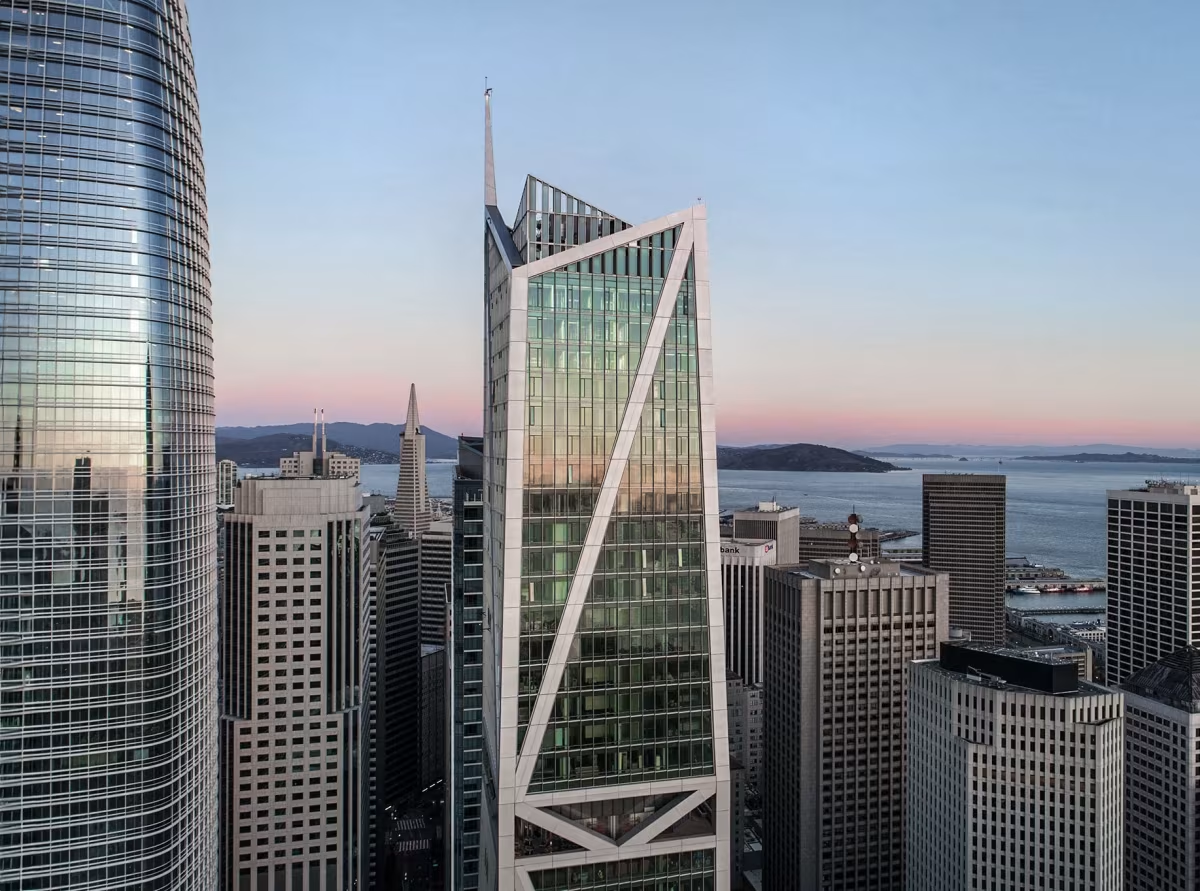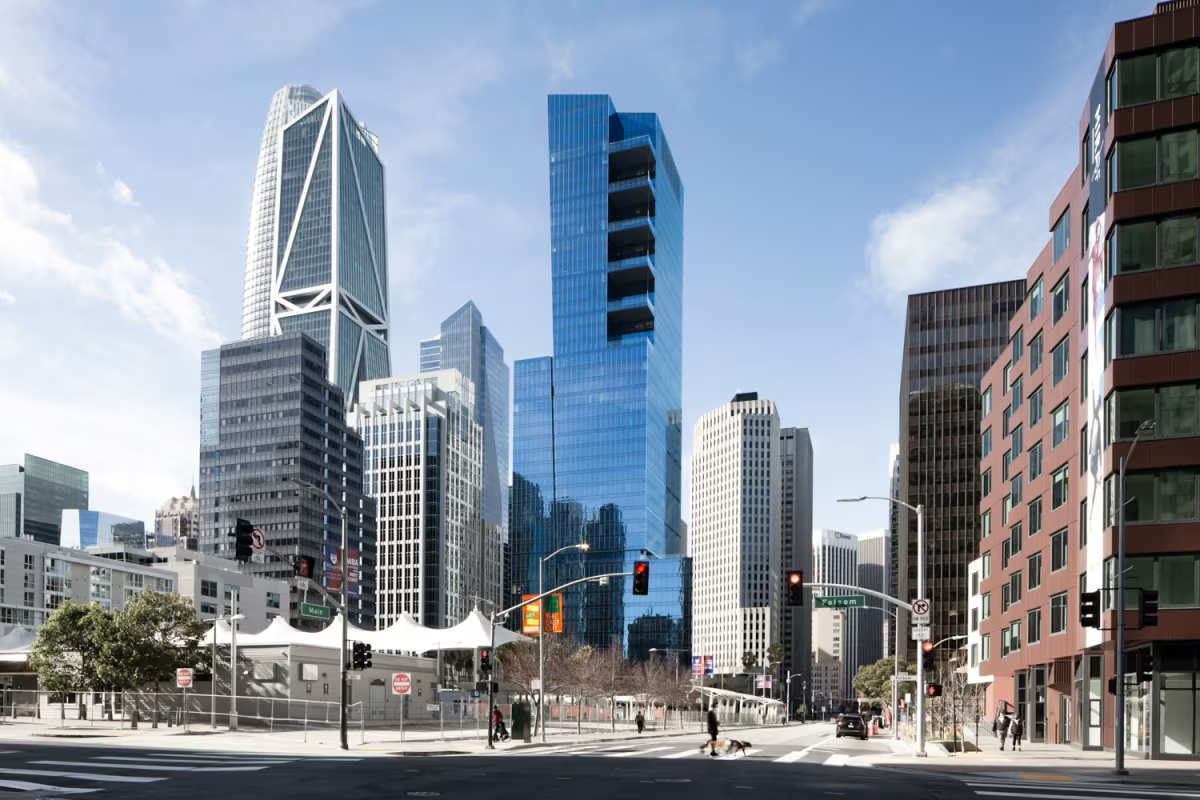181 Fremont Building vs Park Tower at Transbay


Comparing the 181 Fremont Building and the Park Tower at Transbay is interesting because they both stand in San Francisco, CA, and were completed in the same year, but they were designed by different architects.
This offers a unique glimpse at how rival designers approached projects in the same city during the same era.
Height & Size
The 181 Fremont Building is clearly the larger tower of the two, both in terms of height and number of floors. It rises to 810ft (247m) with 56 floors above ground, while the Park Tower at Transbay reaches 604ft (184m) with 43 floors above ground.
Despite being taller and having more floors, 181 Fremont Building has less total built-up area than Park Tower at Transbay.
The 181 Fremont Building also concentrates more floor area on its site, indicating a higher floor area ratio.
Of course, each project may have faced different briefs or regulatory constraints, which we don't really know about and could also explain the outcome.
Architectural Style
Both the 181 Fremont Building and the Park Tower at Transbay were designed in line with the aesthetic conventions of the Contemporary style.
At the time, this style was at the height of its popularity. So both Heller Manus Architects and Goettsch Partners followed what was in many ways expected of them, producing designs that fit comfortably within contemporary architectural norms, rather than breaking with convention.
Uses
Both the 181 Fremont Building and the Park Tower at Transbay were designed to serve as commercial towers, and that has remained their main use since their completion, serving similar roles in the urban fabric.
The 181 Fremont Building offers 55 residential units.
The Park Tower at Transbay also provides 117 parking spaces.
Structure & Facade
The two towers rely on different structural systems, reflecting distinct engineering strategies.
The 181 Fremont Building uses a Trussed Tube In Tube structural system, which combines a central core with a perimeter tube reinforced by diagonal bracing, while the Park Tower at Transbay uses a Frame system, that relies on a regular grid of columns and beams to sustain its weight.
Yet, when it comes to their facade, they both employed the same solution, a Curtain Wall facade.
A curtain wall is a non-load-bearing facade hung from the structural frame. It is anchored to floor slabs and transfers only its own weight and wind loads, allowing for sleek, glassy exteriors.
| 181 Fremont Building | Park Tower at Transbay | |
|---|---|---|
| Heller Manus Architects | Architect | Goettsch Partners |
| 2013 | Construction Started | 2015 |
| 2018 | Year Completed | 2018 |
| Contemporary | Architectural Style | Contemporary |
| Commercial | Current Use | Commercial |
| 56 | Floors Above Ground | 43 |
| 5 | Floors Below Ground | 2 |
| 209 | Last Floor Height | 170 |
| 247 m | Height (m) | 184 m |
| 63500 | Built-up Area (m²) | 74666 |
| Trussed Tube In Tube | Structure Type | Frame |
| Steel | Vertical Structure Material | Steel |
| Concrete | Horizontal Structure Material | Concrete |
| Yes | Facade Structural? | No |
| Level 10 Construction | Main Contractor | Clark Construction |
| Jay Paul Commpany | Developer | MetLife Inc, John Buck Co, And Golub Real Estate Development |
| Arup | Structural Engineer | Magnusson Klemencic Associates |
| CA | State | CA |
| San Francisco | City | San Francisco |
| 181 Fremont Street | Address | 250 Howard Street |